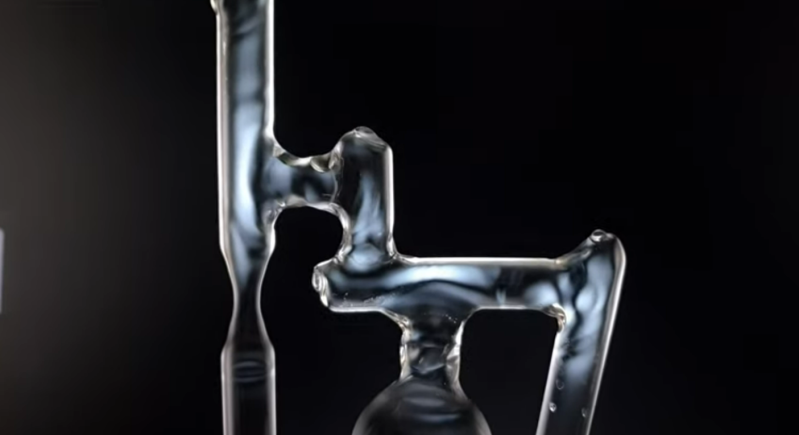There are a lot of ways that stresses can show up, at least when discussing materials science. Cracks in concrete are a common enough example, but any catastrophic failure in a material is often attributable to some stress that couldn’t be withstood. If you’re interested in viewing those stresses before they result in damage to the underlying material, take a look at this DIY polariscope which can view internal stresses in glass and other clear objects.
The polariscope takes its name from the fact that it uses polarized light to view the internal structure of a transparent object such as glass. When the polarized light passes through glass in a certain way, the stresses show up as lighter areas thanks to the stressed glass bending the light back into view. This one is constructed with a polarizing filter placed in front of an LCD screen set to display a completely white image. When glass is placed between the screen and the filter no light is seen through the polariscope unless there are stresses in the glass. Even placing a force on an otherwise un-stressed glass tube can show this effect, and [Advanced Tinkering], this project’s creator, has several other creations which show this effect in striking detail.
The effect can also be observed as colored areas in other plastic materials as well. It’s an interesting tool which can help anyone who frequently works with glass, but it’s also interesting on its own to see clues left behind from the manufacturing process of various household items. We’ve seen some other investigative methods for determining how other household items are mass produced as well, like this project which breaks down the injection molding process.

















Rather than paying so much for a small polarising film online you can just pull apart ans old LCD monitor and take the polarizing film out. It’s the size of the monitor picture and costs nothing.
Also, for kicks, you can take this film out of a working monitor and cut some pieces to put on some safety glasses, You can see the monitor picture on the screen through the polarizing film on the safety glasses but everyone else will just see a blank white screen.
Maybe you can use 3D polarizing glasses, it only works in one direction (because of the other part of the filter) and the filters aren’t in the same direction so you may need to use 2 pairs and change the filters, but there is a way you can use them to do exactly that.
This is a reply for you and Rob….
Polarizing film is pretty cheap online, but by all means use what you have.
Some 3d systems/glasses use circular polarization. I don’t think those will work with a “linear” polarizing filter. That said they make glasses with the filters in whatever direction you want.
Circular polarizers are typically linear polarizers and a quarter waveplate. In one orientation, these will seem to act the same as linear polarizers.
I agree, polarizing film is not costly. Even better, many people already have polarized sunglasses.
I’m struggling to find a good source for linear polarization film, especially larger sizes. Any good sources?
I lied, looking on eBay I’m finding 32″ tv-size films for maybe $20-$30 including shipping.
ROB
I second your comments, many years ago I discovered that parts 3d printed in clear resin also display stress areas when observed through polarized filter.
Then in theory a pair of polarizing glasses and an ordinary laptop would give your a portable polariscope.
Don’t forget about the 3D cinema glasses. Not very fashionable, but they contain polarising filters.
you can also use a polarizing filter used in photography
https://www.instructables.com/make-pictures-with-polarized-light-from-an-LCD/
“stresses revealed” yeah to me too, every time I look in the mirror.
Oh, they mean mechanical stress…
Wait’ll you look at the optically active plastic layer in your car’s safety glass – all kinds of pressure artifacts from the manufacturing process.
Sorry, that’s usually not the plastic but the glass itself. The bonding plastic is usually PVB, which would rather delaminate than show stress under polarized light. There were/are only few optical films, which would show non-uniform under polarized light.
It’s also mot pressure artifacts but cooling artifacts or patterns. Current windshield should look relatively uniform because stress is roughly zero. Only near the edges the stress changes to tensile and then compressive stress. Side and rear windows should show a distinct pattern from the active cooling, which is needed for the tempering.